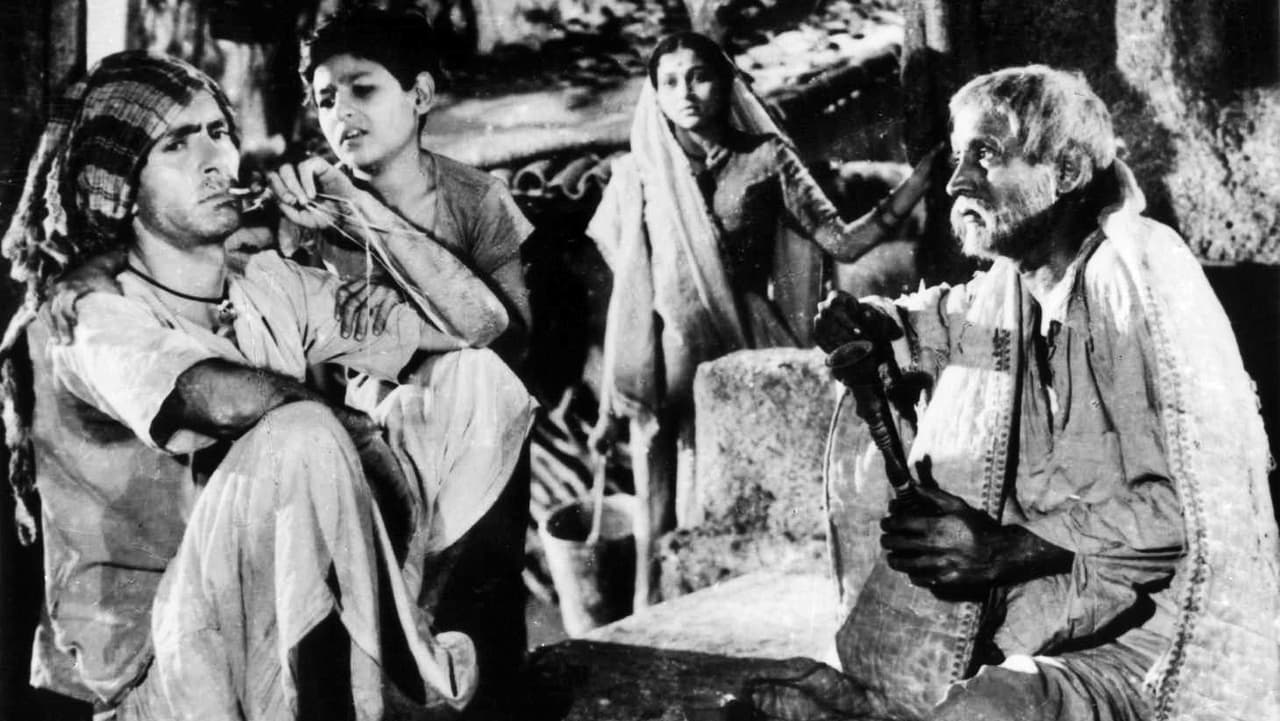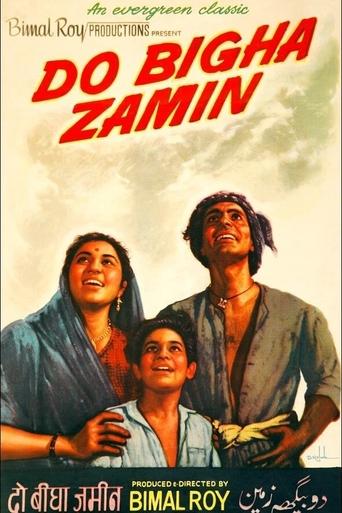BroadcastChic
Excellent, a Must See
Bergorks
If you like to be scared, if you like to laugh, and if you like to learn a thing or two at the movies, this absolutely cannot be missed.
Patience Watson
One of those movie experiences that is so good it makes you realize you've been grading everything else on a curve.
Tejas Nair
Bicycle Thieves is a very touching Italian movie. But this one is our own native version of that. With genuine plot and out-of-the-world cinematography, Do Bigha Zamin is Indian masterpiece.The actors are terrific, totally portraying the characters given to them. Music, direction, screenplay & the execution is all marvelous. Even today, this works because it talks about poverty, life, emotions, relationships & virtues. Fantastic. Moreover, the intricacy with which details are kept in focus should be the USP of this film. 9.1/10.BOTTOM LINE: Get that DVD right now. A must-watch.Can be watched with a typical Indian family? YESProfanity: No | Sex/Nudity: No | Violence: Very Mild | Gore: No | Alcohol/Smoking: No | Drugs: Mild (Hookah)
dbhattac
I have seen Do Bigha Zamin many times ( at least five ) but never had a chance to write a review. Every time I see this movie I put my hats off to Mr. Bimal Roy as the director of this masterpiece. I have read comments about having the idea from a different film ( Vittorio Di Sica's Bicycle Thief ) But I can challenge a lot of director to copy any film they want and produce something like Do Bigha Zamin. The scenes of a village in Bengal and the streets of Calcutta ( now Kolkata ) in early fifties are so real - it just sends shivers through my body. I was a student in a Calcutta college during that period and the scenes from Esplanade area, with Metro Cinema, Chowringhee Road, the double decker buses, the trams and finally the human rickshaws were presented in such a way that I felt being there in that period. The poverty of the villagers and as well as the bustee dwellers were very realistic and the characters were portrayed and played extremely well. Some of the scenes like when Paro went to Meena Kumari to get a letter written, the short scene where Nirupa Roy complaining to Balraj Sahni that he does not love her are very touching scenes. One of the other wonders are the boot polish kid Laloo. I don,t know whether he is an actor or real boot polish kid in real life , but he displayed a wonderful piece of acting as the friendly companion to Kanhaiya ( Rattan Kumar ). Nirupa Roy as the wife of the peasant Balraj Sahani, Balraj Sahani himself and Rattan Kunmar all played their parts very well. I should also mention the role played by Rajlakhsmi Devi as the Bustee owner - what can be more realistic than that. Though the economic scene in India has changed over the last sixty years still there are a lot of poverty in India and peasants like Shambhu Mahato can be found all over India. I appreciate the director's last scene where it shows the family is still intact with hope for the future at the same time the struggle for survival goes on as they lost their land to the greedy landlord. I have the DVD and will watch it many more times.
Jag85
After watching the Satyajit Ray films, The Apu Trilogy (1955-1959) and Devi (1960), I decided to check out some of the realistic films directed by other Bengali filmmakers during that same era. One of the films I found was Do Bigha Zamin, which won the International Prize at the 1954 Cannes Film Festival.Although it's a Hindi-language film, and therefore technically a 'Bollywood' movie, the film's director Bimal Roy is from Bengal, thus the film has more in common with Bengali art cinema than it does with mainstream Bollywood as a result. The film does have a few musical numbers, like a lot of other Hollywood and Bollywood movies of that era, but what sets Do Bigha Zamin apart is its greater sense of realism. Beyond the few musical numbers, the film itself doesn't have much melodrama to it and there isn't much of a background score either, which is a good thing to me as a sappy or sentimental score isn't necessary for a film like this.Do Bigha Zamin is very much a character-driven drama and the actors did a great job in portraying their respective characters. The performances which stand out most are Balraj Sahni as the farmer Shambu, the protagonist of the story, and the child actor Rattan Kumar as his son Kanhaiya. Nirupa Roy also gave a very good performance as Shambu's wife Paro.As for Bimal Roy's direction, the film has one of the best depictions of poverty I've ever seen, covering both rural poverty in a Bengali village and urban poverty in Calcutta (now Kolkata), including the plight of street kids living in the city's slums. The film's ending was also powerful and it was overall a very moving film.8/10
wickedsmrt
Made in 1953, with a socialist theme that was typical of many great bengali directors, this was a great film with superlative performances and very real feel to the film. Balraj Sahni, one of the five greatest actors of India ever, was simply stunning in this movie in terms of his natural acting and superior understanding of the life of a peasant first and then a novice rickshaw (two wheel cart pulled by a human, instead of the horse) puller fresh in the city (He naturally doesn't know that once u take a passenger to the destination, u have to hold it down so that the passenger can alight - he nervously waits for his first dime)..Ill have to come back and write more..sorry

